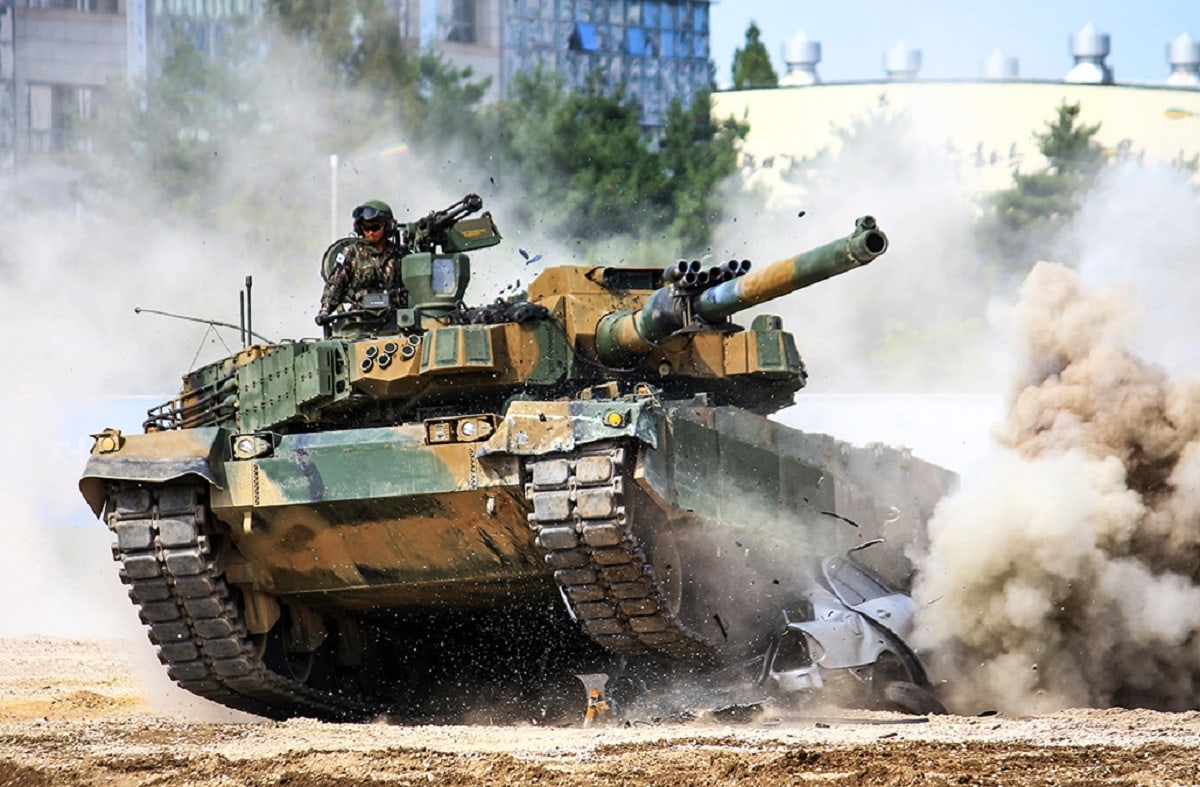In the next decade, the threats facing South Korea will grow. Seoul’s alliance with the U.S. will help contain some of these problems, but North Korea’s nuclear weapons make the credibility of U.S. commitments difficult to judge. South Korea will likely need to expand its own capabilities substantially across multiple domains of power.
Japan faces a similar series of growing threats. Its announcement of a major defense spending increase last year presages a likely similar announcement on the South Korean side.
North Korea’s Conventional and Missile Threats
The North Korean threat to South Korea’s security is well understood. For decades, North Korea has stationed a large conventional force flush against the intra-Korean border. Worse, South Korea’s capital city, Seoul, begins just 25 miles from that border. Seoul is South Korea’s center of gravity, in Clausewitz’ famous expression. Were it to fall, North Korea would likely win a second Korean War. That is why South Korea has traditionally stationed a large infantry force between its capital and the border with the North.
But the North Korean conventional threat is not the only problem. North Korea now turns to missiles and nuclear weapons. The South Korean army could probably defeat the North Korean army by itself, and certainly with U.S. assistance. Defending against missiles is much harder. South Korea’s cities are few and dense. Much of South Korea’s landmass is wooded and mountainous, so the country is dominated by a few large metropolises. These are obviously vulnerable to missile attack, and a nuclear missile attack against one of these cities would be devastating.
China’s Emerging Naval Threat
On top of the North Korean challenge is a new Chinese maritime threat. China is expanding its control over the South China Sea. It is snatching islands in that body of water and militarizing them. The International Court of Justice has ruled against this practice, but China has ignored this and continues to treat that sea as Chinese territorial waters.
This scramble for territory on the seas most crucially impacts the region’s littoral states, Vietnam and the Philippines. But it also has major ramifications for the democracies of northeast Asia — Taiwan, Japan, and South Korea. All of these countries import carbon from the Persian Gulf, and the tankers that feed their economies pass through the South China Sea.
Were China to control the South China Sea completely, as appears to be Beijing’s aim, those three democracies would be vulnerable to a Chinese naval blockade. China would be in position to harass or even block shipping inside the first island chain. It would not even have to carry out a formal embargo. China could declare an environmental or weather emergency in its declared territorial waters and shut down transit shipping for alleged safety reasons Or, it could harass shipping with its fishing fleet and coast guard. This has long been a Chinese practice.
Priorities Across Military Services
The North Korean ground and air challenge, in combination with the Chinese maritime challenge, will soon press South Korea and Japan to develop counter-strategies. The U.S. cannot do everything for these allies, and North Korean and Chinese nuclear weapons make it risky to rely too much on Washington.
Further, South Korea’s collapsing birth rate raises major problems for the future of its army. That force relies on male conscription to match the North Korean army’s sheer size. (North Korea has universal conscription.) But a huge manpower gap looms because of the low birthrate. Without female conscription, the subject of a significant political fight, the South Korean army is likely to demand major new financing for technology — drones, artillery, and armor — to fill the gap.
The air force will demand missile defense and more strike fighters to hit North Korean launch sites and to counter the growing North Korean missile threat. Missile defense is famously expensive, as are the F-35s South Korea is likely to buy.
Finally, the South Korean navy wants an aircraft carrier to deter that potential Chinese blockade of first island chain choke points. A carrier also means support ships. This would also be expensive.
A Headline Defense Hike?
Each South Korean service branch is looking to buy major new platforms that would add major new costs onto existing service budgets. Right now, South Korea spends around $45 billion dollars on defense, but its nearly $2 trillion dollar economy could accommodate more.
Without a headline defense budget hike, a sharp inter-service budget fight is likely. All military branches want pricey new systems. The next decade will likely be tough as the services compete to fund priorities that are all militarily justifiable in response to serious emerging challenges.
Expert Biography: Dr. Robert E. Kelly (@Robert_E_Kelly; RoberEdwinKelly.com) is a professor in the Department of Political Science at Pusan National University and 19FortyFive Contributing Editor.

